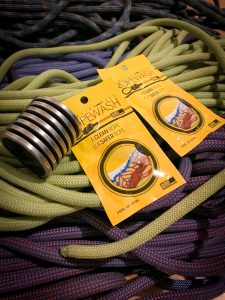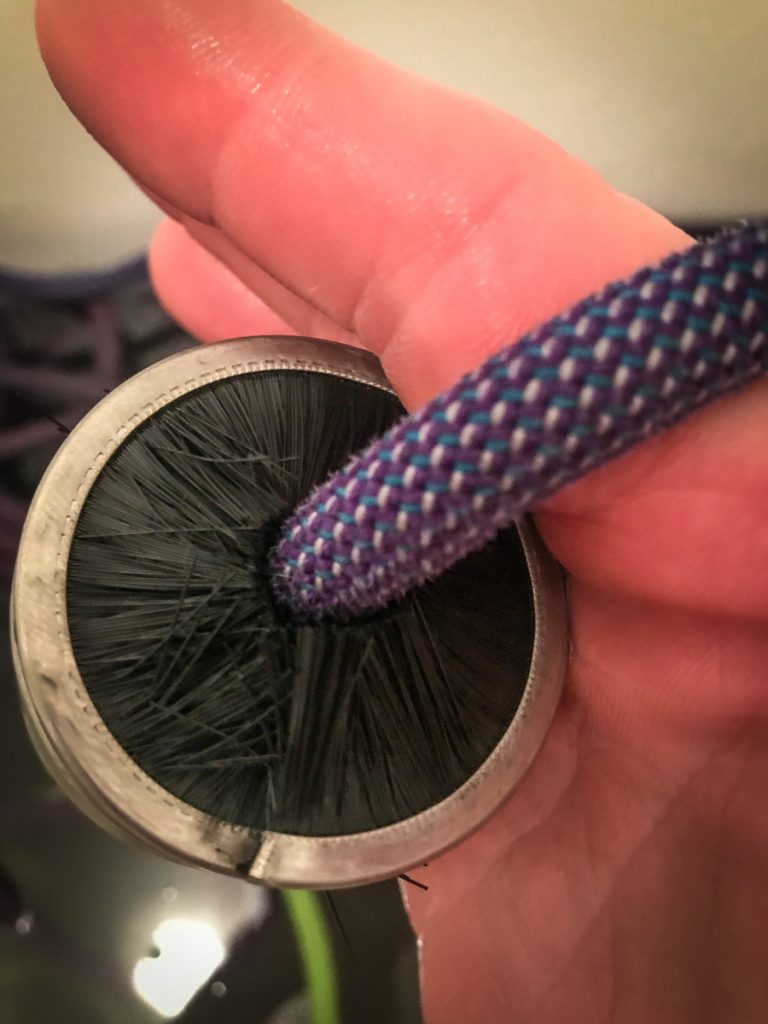When was the last time that you washed your climbing rope? I have to admit that in the past it’s not something I’ve done regularly but it’s the start of a new year and I’m currently going through my gear, making sure it’s all in good shape and ready for the adventures ahead.
Your climbing rope is an important bit of kit – you literally trust your life to it. So it makes sense to look after it! Being careful with it and using rope bags and mats help, but eventually dirt and grit will get into the rope. This not only decreases the rope’s lifespan but also its handling performance.
Cleaning a rope isn’t actually a hard job and doesn’t take that long, there’s just a bit of effort required. The pain is drying it afterwards as they can take up a lot of room and take a while to fully dry. It’s possible to wash a rope in a washing machine but I’ve personally never tried this and have always hand-washed mine in the bath.
There are arguments as to whether you should use detergents or not. Ropes are super strong and can handle a lot of abuse in everyday use but can become dramatically weakened after being in contact with certain chemicals. Some people clean their ropes in just water, or you could use soap flakes – however, on this occasion I’ve used a specially formulated rope wash. The one I’ve used is by Sterling Rope (Wicked Good Rope Wash) It comes in a single use sachet which apparently is enough to clean 1 rope (I used two sachets on 2 x 60m and 1 x 70m ropes which seemed to do a very good job). If you’ve got a lot of ropes to clean, BEAL sells a rope wash that comes in a bottle. Whatever you decide to you use, you should check with the rope manufacturer to make sure it’s safe for your rope.
I flaked the ropes into the bath, tying a simple knot in the ends (to make finding them again easier) then filled the bath with enough warm water to cover the ropes, adding the sachets of rope wash. The instructions on the rope wash say to let the rope soak for at least 30mins to allow for ‘maximum penetration’. I came back to mine around hour later and agitated the rope in the water for a few minutes before passing each rope through a rope cleaning brush a couple of times (I bought mine from Amazon but again, BEAL have their own as well). It was pretty amazing (in a grim way) to see how much dirt and grime was coming out of them. The colour of the water was quite impressive too.

I let the water drain, gave them a good rinse and then filled the tub back up with warm water (no cleaning fluid this time). After soaking them for a bit longer I passed them through the brush a couple more times then drained, rinsed and repeated the process one more time. The idea is to stop once the water becomes clear.
Now comes the matter of drying the ropes! You obviously want somewhere warm and dry but also out of direct sunlight. I left them on my bathroom floor overnight then moved them into the lounge the next day. I laid them out directly on the floor rather than hanging them up, as some manufacturers advise against that. As always with any climbing kit, if there’s any doubt, check with the manufacture and follow their advice. I daisy-chained each rope to make handling a bit easier and for them to take up less space. They took roughly 3 days in my flat before they were fully dry.
It was definitely worth the effort. The amount of dirt that came out of the ropes can only be a good thing for them and they certainly look and handle a lot better now.







